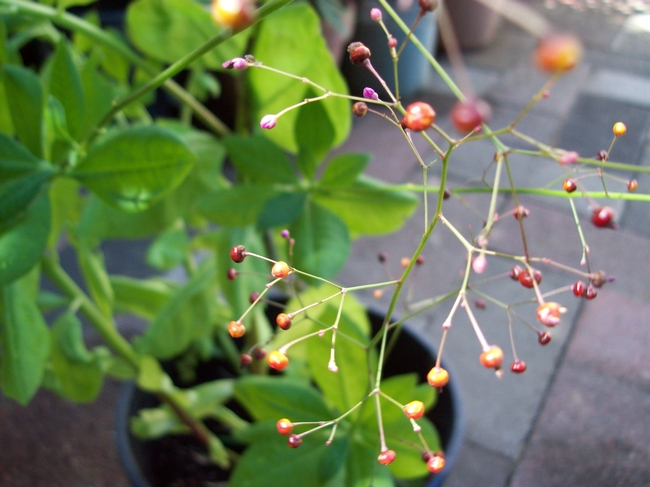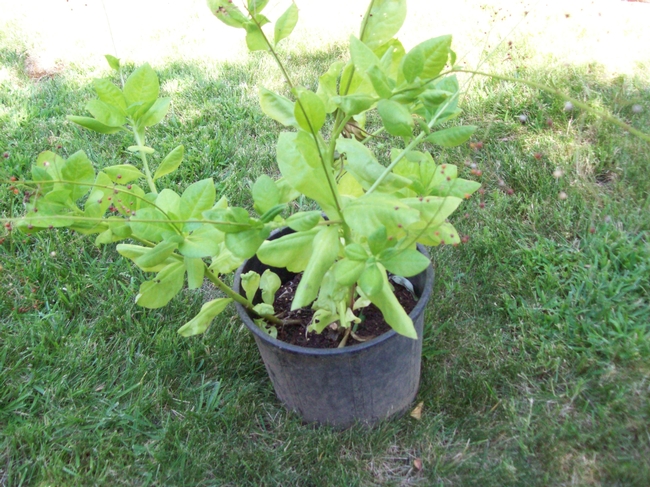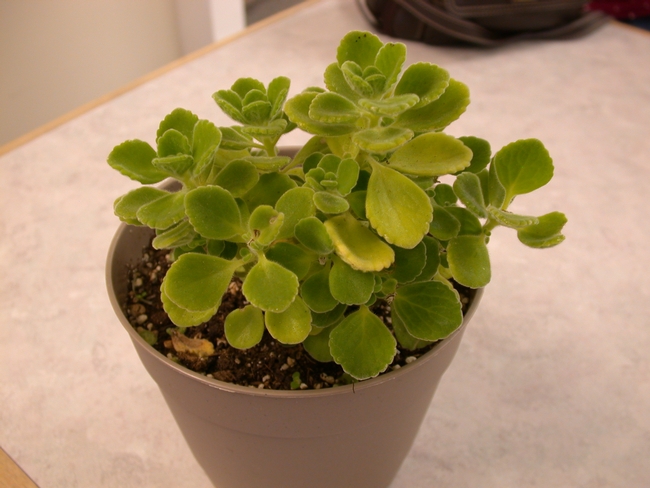- Author: Patricia Brantley
So the other day we were in the San Francisco for lunch and a walk around. As we were leaving the Embarcadero there was this little flower shop that had a few potted plants outside. Well you know that no Master Gardener can walk past a stand of plants or vegetation without at least taking a 5 minute look-see.
I walked inside first. The tiny cramped shop was humid and there were canaries in cages singing away. The cut flowers were beautiful. From the ordinary daisy to exotic orchids. There were a lot of flowers crammed into this dark little place.
I stepped back out into the sunlight to peruse the potted plants, thinking I could take home a living souvenir from our day. Well, the frugal part of Master Gardener caught up with me- $8.50 for a polka dot plant in a 4 inch pot! I just picked one up for a filler at Walmart for $2.50.
Then there was a row of African Violets. But wait, these had a tag hanging over them. “Waiting to Bloom--$4.50”. They honestly didn’t look much different than the others that were bloomed. There was also a succulent in a 4” pot for $8.99 that while healthy, was still only half the size of one at a local garden center.
At this point, I finally had had enough of searching for my living souvenir and decided to head on my way with just some photos. Just as I ran out of room on my photo card, I looked down and at my feet was a large group of chopped-off orchids. There were two leaves and a piece of stem. I now know where all those pretty cut ones inside had come from. The sign read Phalaenopsis $3.00…Waiting to Bloom.



- Author: Karen Metz
A few years ago at one of our plant exchanges, a couple brought in a tray of what looked like pretty ordinary succulents. Appearances can be deceiving though. They explained that these were Stapelia. Stapelia have about 30-40species in the genus and are originally from South Africa. Globally they are known as starfish flower but apparently in Africa they are called carrion flower. They can range from a few inches to a few feet in height. Their flowers can range from a two centimeters to sixteen inches across. All but one have flowers that smell like dead meat to attract flies that are the plants' pollinators.
Always attracted to the bizarre, at least in the plant world, I took one home. It grew like gangbusters, initially on my shaded patio and then inside for the winter. It seemed happy, but no flowers. Recently I moved it to another room and suddenly I had a bud. It took several days to open and sure enough it looked like a delicate starfish. The first night I did not detect a smell. The second night though it hit me like gangbusters. It smelled just about what you would think it would smell like. I only noticed the scent for a few days and only if I got near the plant. Next the "legs" on the starfish flower started to fold up backwards and what it looks like now is a cute button.
Looking as the Internet, I think it may be Stapelia lepida, but I'm not sure. I can't wait to see what happens next. The resources say it may form a pod and over a year form seed. Apparently the plant can be fairly easily propagated from stem cuttings if you let them callus over as well as grown from seed. The biggest problems with the plant seems to be problems with over-watering and with mealy bugs.
I think it's pretty cool.


- Author: Betsy Lunde
Have any euphorbias growing at your house? You know those strange prickly, very leggy things with few leaves and maybe red or orange flowers. Euphorbia milii or Crown of Thorns probably came zipping to mind at that description. Many folks think euphorbias are only that! No so; many euphorbias are indeed prickly, but others are smooth, fleshy stemmed plants with the occasional tufts of small leaves.
Many euphorbias are listed as succulents while other varieties are not. Some are cactus-like while others such as the Christmas poinsettia, Euphorbia pulcherrima, can grow leggy up to 10 feet or taller. A number of euphorbias have a group of brightly colored bracts which are commonly referred to as the flowers; the true flowers are inconspicuous – the “flowers” of the poinsettias which we love for the showiness of flower and size are merely the bracts.
Euphorbia milii are one of my favorite house plants. If we lived in the San Diego area, these plants would be living outside in rich, porous soil in containers or in the ground itself either trained on a trellis or small frame work. The most common bract colors are red, orange, and pink. If you are lucky, you can find colors of white and pink with an orange splash. Talking with the owner of the Great Petaluma Desert some years back, I was amazed to find that he was able to propagate all colors of the crown of thorns –except the white. For some strange reason, that particular plant is very difficult to start from cuttings.
Say you are interested in euphorbias but don’t care to get full of scratches. Never fear, there are plenty of species of the family ready to call your garden home! How about Euphorbia obesa or baseball plant. Considered a succulent, it is a house plant or indoor/outdoor container plant. A solid, fleshy, gray-green sphere or short cylinder growing to 8 inches in height, with brownish striping and brown dots that resemble the stitching on a baseball. The only requirements for growth are good drainage, bright light, warmth, no sudden temperature changes, and keeping watering to a minimum. Believe me about the watering, too much and the thing keels over as though shot! I had to kill off 2 of them before getting the message.
Growing any euphorbia in the house successfully means understanding the light and temperature requirements of these plants. Grow them almost anywhere in the house and they will survive; put them in a window where there is sunlight, but no real direct sun and where they are near a window with no coverings between the plants at night. This is because they want warm days and cold nights, just like their native lands such as India and various parts of Africa.
When looking for euphorbias in the succulent section of your favorite nursery, check the plants carefully. If you don’t check, you may grab cacti in error. How to tell the difference when the desired plant has thorns? Look closely as the thorn attachment area; if you see a pad-like area (called an areole) that looks fuzzy with a number of thorns coming out, you’re holding a cactus. No pad and 1 or 2 thorns emerging at the same place, you have a euphorbia.
Go to a cactus and succulent sale or show to see the variety and wonder of the euphorbia world. I dare you to walk away empty-handed; I know I can’t!
- Author: Betty Victor
Have you every wandered through a nursery just to look knowing that you really don’t’ have room for another plant? Hard to do isn’t it? Well that’s what I did last year and saw an unusual plant, so I just had to buy it and bring it home. Upon getting it home, I found I really didn’t know what to do with it, so I put it in a container. The tag said it was Jollas-de-Opar ‘Limon’ which did not help at all. So I went off to the internet to learn more.

Jewels of Opar are sometimes called fame flower, Talinum paniculatum, and is related to Portulaca. A fun fact about this plant is that it is said to be mentioned in the Tarzan books that were written by Edgar Rice Burroughs. Books that I have not read. This is a tropical, tender perennial. When we had frost last year, I forgot to cover it like my other frost tender plants; it turned into a black mess. It seems there are questions as to if this is a succulent or a cactus, an agreement has not been reached to date.
Wonder of wonders it came back this year and really grew. The stems are long, pointed almost succulent-like in lime green about 10 inches long. The hot pink star-shaped flowers are small and really not very noticeable, but the best part is once the flowers die, what is left is jewel like seedpods, starting out an amber color fading to cinnamon red hue. They will stay on the plant until late winter-that is if I don’t cut and dry them to see if the pods will stay on the stems.
It is a self-seeding plant so if you want to avoid more of them, dead heading is important. If you do not dead head them and you plant them in your garden you could have more than you want.

- Author: Betty Victor
I have a new addition to my garden, Cuban oregano, not knowing anything about this very fragrant succulent I started to learn what I could.
Cuban oregano (Plectranthus amboinicus) is related to Coleus and has several common names: Spanish thyme, Indian borage, and Mexican mint.

It has thick gray-green saw-tooth leaves that are fuzzy underneath. My plant is young so it has not bloomed, but next summer when it does, its blossoms could be white, pink, lilac or purple. Like most succulents it is easy to grow. This oregano needs shade in the hottest part of the day, but will not do well in very cold weather, so it will need protection from the frost. You can grow it in a container and then when winter arrives, move it inside.
Sunset Western Garden Book says that it is used in Cuban cooking but too much of the herb will overpower other ingredients.



